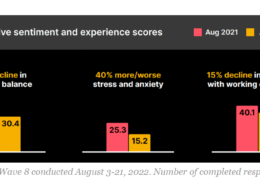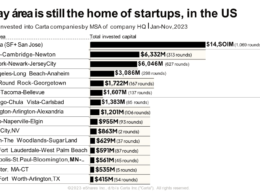the health strategist
institute for strategic health transformation
& digital health
Joaquim Cardoso MSc.
Chief Research and Strategy Officer (CRSO),
Chief Editor and Senior Advisor
September 13, 2023
What is the message?
Generative AI, often referred to as gen AI, has rapidly gained momentum since the release of ChatGPT in November 2022. This article highlights key insights from McKinsey’s research, focusing on 15 charts that shed light on the future of generative AI.
These charts address crucial questions about the technology’s capabilities, its impact on various industries and jobs, its potential value to organizations, worker sentiments, and the need for responsible usage safeguards.
The first chart is about how Generative AI is evolving at record speed while CEOs are still learning the technology’s business value and risks.
Chart 1

DEEP DIVE
Chart 1 – What every CEO should know about generative AI
McKinsey Digital
Michael Chui, Roger Roberts, Tanya Rodchenko, Alex Singla, Alex Sukharevsky, Lareina Yee, and Delphine Zurkiya
May 12, 2023

Generative AI is evolving at record speed while CEOs are still learning the technology’s business value and risks. Here, we offer some of the generative AI essentials.
Amid the excitement surrounding generative AI since the release of ChatGPT, Bard, Claude, Midjourney, and other content-creating tools, CEOs are understandably wondering: Is this tech hype, or a game-changing opportunity? And if it is the latter, what is the value to my business?
The public-facing version of ChatGPT reached 100 million users in just two months. It democratized AI in a manner not previously seen while becoming by far the fastest-growing app ever. Its out-of-the-box accessibility makes generative AI different from all AI that came before it. Users don’t need a degree in machine learning to interact with or derive value from it; nearly anyone who can ask questions can use it. And, as with other breakthrough technologies such as the personal computer or iPhone, one generative AI platform can give rise to many applications for audiences of any age or education level and in any location with internet access.
All of this is possible because generative AI chatbots are powered by foundation models, which contain expansive neural networks trained on vast quantities of unstructured, unlabeled data in a variety of formats, such as text and audio. Foundation models can be used for a wide range of tasks. In contrast, previous generations of AI models were often “narrow,” meaning they could perform just one task, such as predicting customer churn. One foundation model, for example, can create an executive summary for a 20,000-word technical report on quantum computing, draft a go-to-market strategy for a tree-trimming business, and provide five different recipes for the ten ingredients in someone’s refrigerator. The downside to such versatility is that, for now, generative AI can sometimes provide less accurate results, placing renewed attention on AI risk management.
With proper guardrails in place, generative AI can not only unlock novel use cases for businesses but also speed up, scale, or otherwise improve existing ones. Imagine a customer sales call, for example. A specially trained AI model could suggest upselling opportunities to a salesperson, but until now those were usually based only on static customer data obtained before the start of the call, such as demographics and purchasing patterns. A generative AI tool might suggest upselling opportunities to the salesperson in real time based on the actual content of the conversation, drawing from internal customer data, external market trends, and social media influencer data. At the same time, generative AI could offer a first draft of a sales pitch for the salesperson to adapt and personalize.
The preceding example demonstrates the implications of the technology on one job role. But nearly every knowledge worker can likely benefit from teaming up with generative AI. In fact, while generative AI may eventually be used to automate some tasks, much of its value could derive from how software vendors embed the technology into everyday tools (for example, email or word-processing software) used by knowledge workers. Such upgraded tools could substantially increase productivity.
CEOs want to know if they should act now—and, if so, how to start. Some may see an opportunity to leapfrog the competition by reimagining how humans get work done with generative AI applications at their side. Others may want to exercise caution, experimenting with a few use cases and learning more before making any large investments. Companies will also have to assess whether they have the necessary technical expertise, technology and data architecture, operating model, and risk management processes that some of the more transformative implementations of generative AI will require.
The goal of this article is to help CEOs and their teams reflect on the value creation case for generative AI and how to start their journey. First, we offer a generative AI primer to help executives better understand the fast-evolving state of AI and the technical options available. The next section looks at how companies can participate in generative AI through four example cases targeted toward improving organizational effectiveness. These cases reflect what we are seeing among early adopters and shed light on the array of options across the technology, cost, and operating model requirements. Finally, we address the CEO’s vital role in positioning an organization for success with generative AI.
Excitement around generative AI is palpable, and C-suite executives rightfully want to move ahead with thoughtful and intentional speed. We hope this article offers business leaders a balanced introduction into the promising world of generative AI.
Originally published at https://www.mckinsey.com












